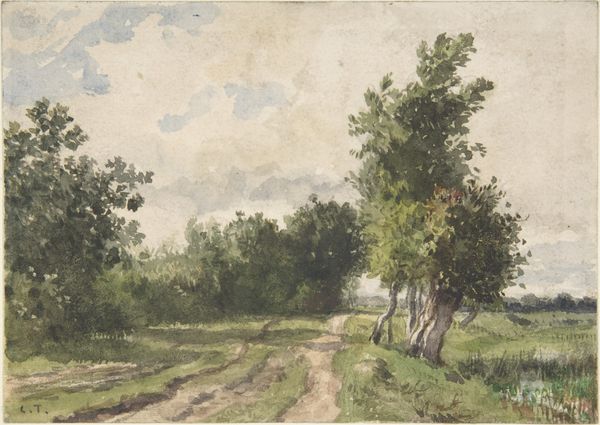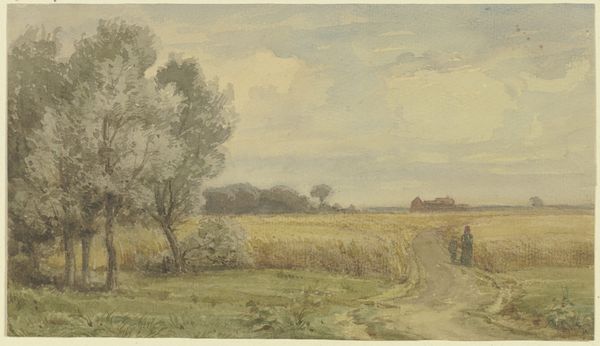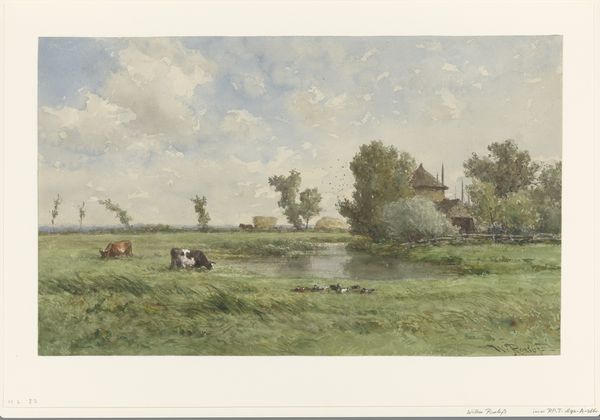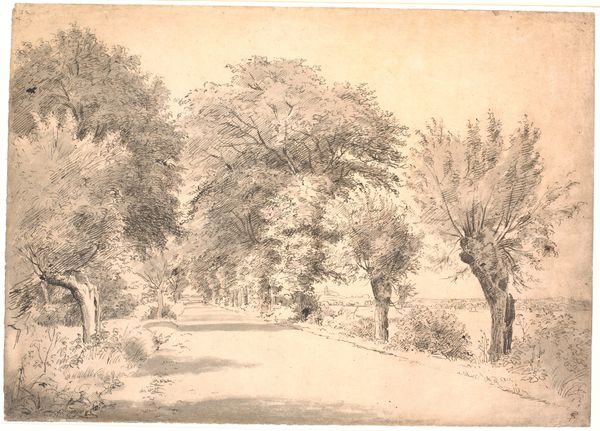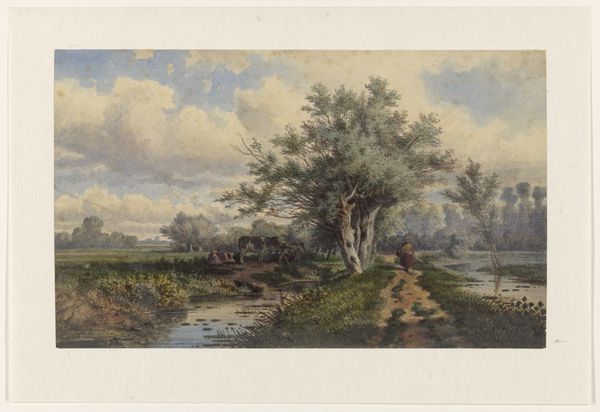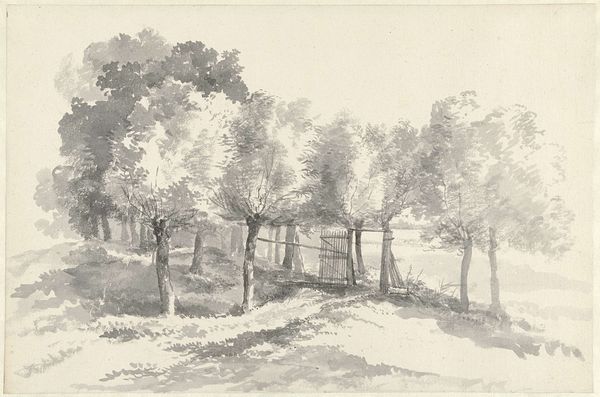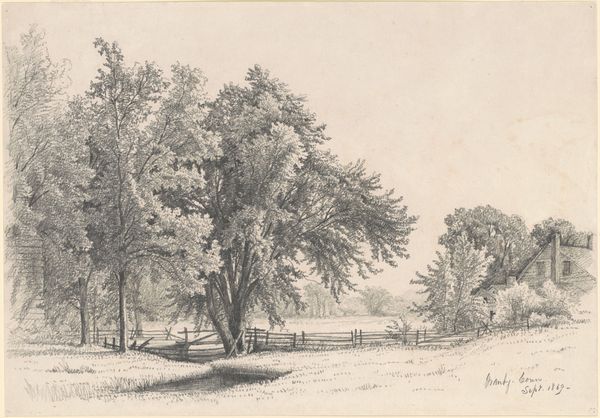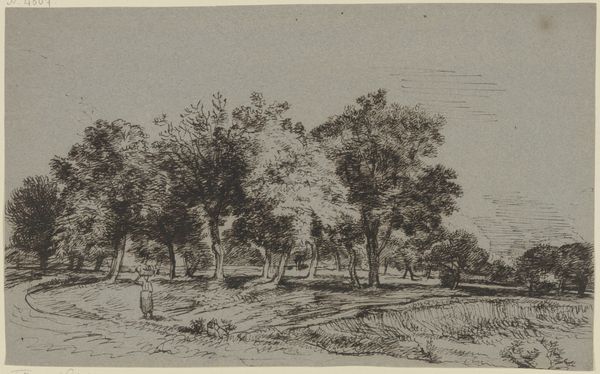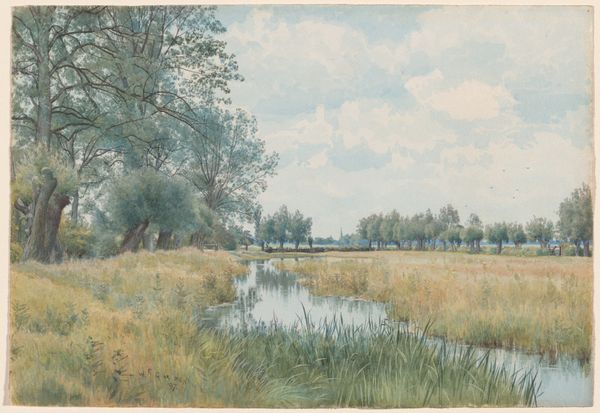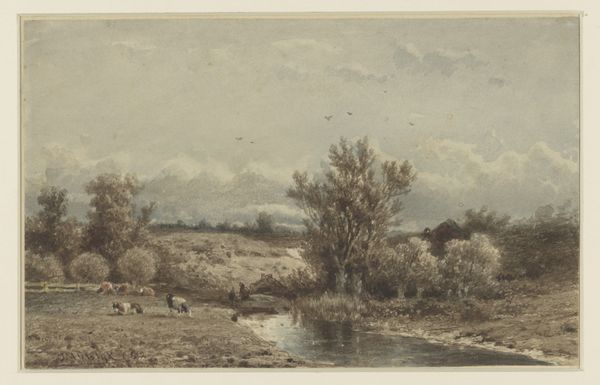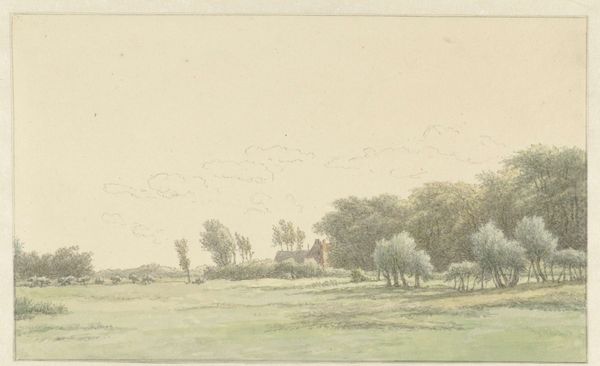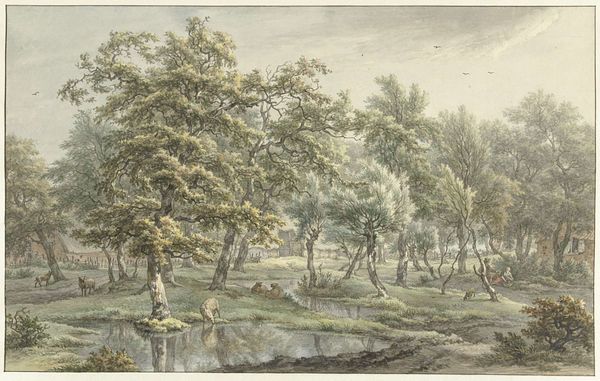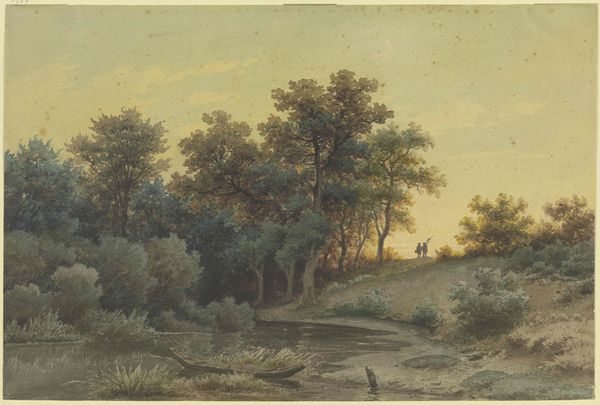
Landschap met een sloot waar twee jongens vissen 1834 - 1892
0:00
0:00
johanhendrikweissenbruch
Rijksmuseum
painting, watercolor
#
dutch-golden-age
#
painting
#
landscape
#
nature
#
watercolor
#
genre-painting
#
watercolor
#
realism
Dimensions: height 228 mm, width 306 mm
Copyright: Rijks Museum: Open Domain
Curator: It's amazing how light washes across the watercolor of Johan Hendrik Weissenbruch's "Landscape with a Ditch Where Two Boys Are Fishing," likely created sometime between 1834 and 1892. There is a gentle haziness, isn't there? Editor: Absolutely. Immediately, I’m drawn to the texture. You can almost feel the rough quality of the paper absorbing the pigment. And it’s not just the pigment but the artist's labor, the repetitive motions, which brings us closer to the rural life it portrays. Curator: Precisely. The depicted scene gives us a window into the pastoral leisure activities enjoyed by the working classes of the time. Here the act of image-making becomes deeply intertwined with questions of visibility, who gets depicted, and the politics of land use. Editor: Let’s also consider how easily watercolor travels. Was Weissenbruch sketching en plein air? If so, did the act of on-site production shift his relationship to the subject matter and what was he doing with those impressions back in the studio? Curator: Possibly! The burgeoning art market supported a growing number of artists like Weissenbruch in the 19th century, but what values are assigned to certain pieces or series? Landscapes offered city dwellers an idealized escape, an opportunity for introspection amid industrial change. How are landscapes like this viewed, traded, or consumed? Editor: Speaking of values, there’s a definite emphasis on everyday labor, particularly as it intersects with children and their upbringing. Fishing for sustenance rather than pure recreation adds weight. The material limitations and techniques are directly related to their lives. Curator: We must also address how the museum setting elevates and, simultaneously, distances this watercolor from the experiences it aims to depict. How does placing an artwork like this in the Rijksmuseum change its meaning? What historical narrative does its placement reinforce or challenge? Editor: Good point. What this does is challenge us to move beyond the artwork's surface to fully recognize how deeply intertwined the artwork, the context of creation, the consumption are—they all define its status as "art." Curator: Looking at the work now, with fresh insight, illuminates our role as viewers. It's an endless inquiry—but one worth pursuing, wouldn't you say? Editor: Undeniably so. It's imperative for us to reevaluate not just the objects themselves, but our own processes.
Comments
No comments
Be the first to comment and join the conversation on the ultimate creative platform.
